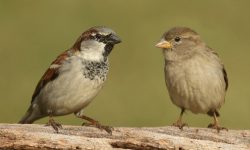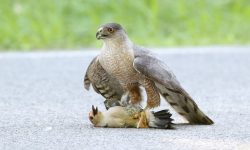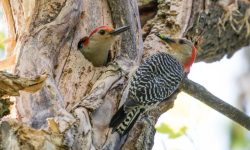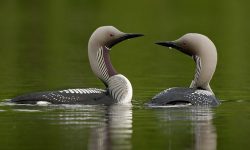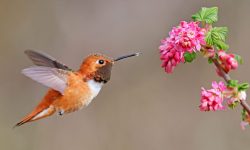White-eyes, with their delicate bodies, bright olive-green feathers, and iconic white eye-rings, have long enchanted bird lovers around the world. These charming passerines, commonly from the genus Zosterops, are native to parts of Asia and the Pacific but have increasingly appeared in aviculture due to their soft songs and curious behavior. For bird enthusiasts in the U.S., caring for White-eyes at home can be a rewarding yet delicate endeavor.

This comprehensive guide explores everything you need to know—from choosing the right enclosure to diet, enrichment, and overall care.
Understanding White-Eyes: A Glimpse into Their Natural World
What Are White-Eyes?
White-eyes are a diverse group of small passerine birds belonging primarily to the genus Zosterops, which includes over 100 recognized species. Their common name comes from the conspicuous white ring of tiny feathers encircling their eyes, a feature that gives them an alert and endearing expression. This characteristic “spectacle” is not only charming but also an important field mark for birders and breeders alike.
Physically, White-eyes are delicate and compact birds, typically weighing between 9 to 15 grams and measuring about 4 to 5 inches (10–13 cm) in length. Their plumage is often a vibrant mix of olive-green, yellow, and gray, helping them blend seamlessly into leafy foliage in their natural habitats. Their short, slightly curved bills are perfectly adapted for feeding on nectar, soft fruits, and tiny insects, while their slender legs and sharp claws allow them to perch on even the most delicate branches with ease.
In the wild, White-eyes are found across a broad geographical range, stretching from East and Southeast Asia to the Pacific Islands, sub-Saharan Africa, and even parts of the Arabian Peninsula. Though many species are endemic to small islands or specific habitats, some—like the Japanese White-eye (Zosterops japonicus)—have successfully colonized new areas and are even considered invasive in places like Hawaii.
Two species particularly popular among aviculturists and bird hobbyists are:
-
Japanese White-eye (Zosterops japonicus): Known for its melodious call, adaptability to captivity, and bright green plumage. Originally native to East Asia, this species has spread to Hawaii and parts of the Pacific.
-
Indian White-eye (Zosterops palpebrosus): Smaller and more delicate in appearance, this species features a rich yellow throat and underparts, with more subtle green on the back. It is commonly seen across the Indian subcontinent and is prized for its gentle nature.
Behaviorally, White-eyes are incredibly active, social, and intelligent. In the wild, they often travel in small, tight-knit flocks, flitting from branch to branch in constant search of food. Their vocalizations are a soft, high-pitched series of whistles and chirps—gentle yet expressive.
Are They Legal in the U.S.?
Due to increasing global interest in exotic birds, it is important to emphasize that not all White-eye species can be legally imported or kept as pets in the United States. The U.S. Fish & Wildlife Service (FWS) regulates the importation and possession of all exotic wildlife, including birds, under several federal laws such as the Migratory Bird Treaty Act and the Lacey Act.
Many White-eyes—especially wild-caught individuals—are prohibited to prevent ecological disruption, the spread of avian diseases, and unethical trapping practices. For example, in Hawaii, the introduced Japanese White-eye has had significant ecological impacts on native bird species due to competition for food and possible disease transmission.
Therefore, if you are considering keeping a White-eye in the U.S., you must:
-
Purchase only from USDA-licensed breeders who raise birds domestically in humane and controlled environments.
-
Avoid wild-caught individuals, which may be illegal, stressed, or disease-prone.
-
Check state and local laws, as some states (like California or Hawaii) have stricter exotic animal regulations.
-
Maintain documentation of legal acquisition, which may be required during veterinary visits or inspections.
While these birds can be a joy to observe and care for, potential owners have a responsibility to ensure that their decision does not harm wild populations or the delicate balance of local ecosystems. Ethical birdkeeping begins with informed choices.
Setting Up the Ideal Home for White-Eyes
Choosing the Right Cage
White-eyes are highly active and agile fliers. A small, cramped cage can quickly lead to boredom or stress.
Ideal cage dimensions: At least 36 inches in length, 24 inches in height, and 24 inches in width. Aviaries or flight cages are highly recommended.
Key features to include: horizontal space for flight, multiple perches at different heights and textures, natural branches from safe woods (e.g., apple, willow, bamboo), and an easy-to-clean bottom tray.
Temperature and Lighting
White-eyes thrive in moderate temperatures. Keep indoor temperature between 65–80°F (18–27°C).
Provide 12–14 hours of daylight using full-spectrum lighting if natural sunlight is limited. UV exposure is crucial for vitamin D synthesis and mental health.
Humidity and Bathing
These birds love to bathe daily. Offer a shallow water dish or mist them gently. Maintain indoor humidity between 40–60%, especially in winter months.
What to Feed Your White-Eyes
Natural Diet in the Wild
In the wild, White-eyes consume a mix of nectar, small insects and larvae, soft fruits like figs, berries, and bananas, as well as tree sap and pollen.
Creating a Balanced Diet at Home
To mimic their natural intake, combine the following:
1. Insects and Protein Sources: Provide mealworms, waxworms, and fruit flies several times a week. Commercial insectivore diets can supplement live feeding.
2. Nectar and Sweet Mixes: Use a homemade nectar solution (1 part honey or sugar to 5 parts water) or commercial nectar formulated for lorikeets and softbills. Do not use hummingbird nectar, which lacks key nutrients.
3. Fruits: Offer finely chopped papaya, mango, apple, banana, and melon daily. Rotate fruits for variety and monitor for signs of overripe or spoiled pieces.
4. Supplements: Calcium and vitamin supplements are essential. Dust insects or mix into soft foods 2–3 times a week.
Warning: Avoid avocado, chocolate, caffeine, onions, and garlic, all of which are toxic to birds.
Daily Care Routine and Social Needs
Cleaning and Hygiene
Maintaining a clean and sanitary environment is absolutely vital to the health and well-being of White-eyes. These tiny birds are highly sensitive to bacteria, mold, and spoiled food, which can quickly lead to digestive or respiratory illnesses if not addressed promptly.
Start each day by refreshing both food and water dishes. White-eyes are particularly messy eaters—fruit pieces may get dropped, nectar can splash, and live insects may crawl out—so ensure bowls are washed thoroughly using warm water and bird-safe soap. Avoid dish detergents with strong chemicals or scents.
After feeding, check the cage floor for leftover fruit or wet food, and remove any remnants before they begin to ferment. Spoiled food not only attracts ants and flies but can cause serious illness if ingested.
Replace cage liners or paper towels every 1–2 days, depending on the size of the enclosure and number of birds. Spot-clean areas soiled by droppings daily, especially around perches, feeding zones, and water dishes.
Once a week, perform a deep cleaning of the entire enclosure. This includes:
-
Removing all perches, dishes, and toys
-
Scrubbing cage bars, corners, and bottom trays
-
Disinfecting with a bird-safe cleaner (avoid bleach or ammonia)
-
Rinsing thoroughly and drying completely before returning the birds
For natural wooden perches, scrub gently with a brush and let them air dry in the sun if possible, as UV rays help kill bacteria. Cleanliness not only protects your White-eyes from disease, but also contributes to their comfort and mental well-being.
Social Interaction
White-eyes are highly social and intelligent birds that naturally live in small flocks. In the wild, they spend their days foraging side by side, preening each other’s feathers, and communicating with soft calls. Recreating this sense of companionship in captivity is essential to their happiness.
Whenever possible, it’s best to keep White-eyes in pairs or small groups—ideally of the same species and age group. A solitary bird may become lonely or withdrawn over time, especially if left without interaction or stimulation. However, it’s important to monitor any group carefully, especially during breeding season, as hormonal shifts may trigger territorial or aggressive behavior.
You’ll often notice that White-eyes engage in soft, high-pitched chirps when they see each other or hear you approach. These birds thrive on gentle vocal and visual interaction, so placing their enclosure in a moderately active area of the home—such as near a window or in a room with daily activity—can enrich their lives. However, avoid placing them near loud TVs, kitchens with smoke or fumes, or in drafty hallways.
If you only keep one bird, you’ll need to devote extra time to social bonding. Talk to them regularly in a calm voice, offer treats from your hand, and allow them to watch you move through their environment. While White-eyes may never become as tame as parrots, many individuals learn to perch near their owners or respond to familiar routines.
Creating a stimulating, hygienic, and social environment not only prevents illness and boredom but also allows your White-eyes to display their natural behaviors—singing, grooming, foraging, and interacting—which are key signs of a healthy and happy life in captivity.
Enrichment and Behavioral Health
Mental Stimulation
White-eyes may be tiny in size, but their minds are sharp, curious, and constantly active. In the wild, they spend much of their day exploring treetops, darting from branch to branch, inspecting leaves for insects, sipping nectar from flowers, and socializing with their flock. Without that daily variety, captive White-eyes can quickly fall into boredom—a silent but serious threat to their physical and emotional health.
Boredom in birds often manifests as lethargy, repetitive pacing, excessive vocalization, or even feather-plucking, a condition where the bird obsessively pulls out its own feathers due to stress or frustration. Preventing this requires more than just a clean cage and food—it requires an environment that changes, challenges, and stimulates.
Start by rotating and rearranging cage accessories weekly. Something as simple as moving a perch from left to right or swapping a feeder’s location can encourage exploration and awaken natural foraging instincts.
Introduce a variety of hanging toys, especially those made from natural fibers like sisal, palm leaves, or coconut husks. Softbills like White-eyes don’t usually destroy toys the way parrots do, but they love to investigate, chew gently, and hop through hanging strands or bells.
Adding non-toxic live plants such as spider plants, bamboo palms, or ferns either inside a spacious aviary or just outside the cage offers visual diversity and a touch of nature. Make sure any plant used is bird-safe and pesticide-free.
Puzzle feeders or treat-dispensing devices also provide enrichment. You can hide chopped fruit in foraging cups, place nectar inside small tubes, or freeze treats into blocks of ice for a refreshing challenge on hot days.
Playing recorded bird calls or ambient forest sounds can also spark interest and interaction, especially if your White-eye is housed alone.
Flight Time
Flight is more than exercise for a White-eye—it’s expression, freedom, and joy. These agile fliers are built for quick, darting movements through dense foliage. In captivity, depriving them of the ability to stretch their wings can lead to muscle atrophy, anxiety, and listlessness.
If your living situation allows, designate a safe, enclosed room where your White-eye can have supervised flight sessions outside the cage. Before releasing them, ensure that:
-
Ceiling fans are turned off
-
Windows and doors are shut or covered
-
Mirrors are concealed to prevent dangerous collisions
-
Toxic plants, open flames, and small crevices are removed or blocked
During flight time, keep the lights bright and gently encourage exploration. White-eyes tend to move quickly but cautiously, and over time, they may return to your hand or perch voluntarily once they feel secure.
If free-flight is not an option, invest in a large flight cage or aviary with horizontal space that allows for fluttering between branches and perches. The more vertical and lateral movement available, the better their physical and psychological condition will be.
A mentally and physically enriched White-eye is not just healthier—it is happier, more vocal, more curious, and more likely to thrive under human care. Creating such a space is one of the most rewarding parts of birdkeeping and a true reflection of respect for their wild spirit.
Breeding Considerations
While breeding White-eyes at home is possible, it requires advanced knowledge and strict environmental control.
Nesting materials may include coconut fibers, soft grasses, and moss. Birds prefer discreet corners with soft lighting for nesting. Increase protein and calcium in the diet during breeding periods. Monitor closely for signs of egg binding or aggression.
Breeding without proper preparation can lead to stress or health issues. Beginners are encouraged to avoid breeding until they have mastered general care.
Health Monitoring and Common Issues
Signs of a Healthy White-Eye
A healthy White-eye is a lively, curious bird that engages with its environment throughout the day. When observing your bird, look for active and responsive behavior—they should be flitting from perch to perch, exploring their cage, and reacting to sights and sounds around them.
Their plumage should appear smooth, bright, and well-groomed, particularly the characteristic white eye-ring and the olive or yellow-green feathers that make the species so visually striking. White-eyes often preen throughout the day to maintain feather condition, and any dullness or disheveled appearance can indicate underlying health issues.
Healthy birds will also emit regular vocalizations, typically soft, melodic whistles or high-pitched chirps. Silence or a sudden drop in vocal activity may signal discomfort or illness.
Lastly, monitor their appetite and droppings. A healthy White-eye eats eagerly—whether it’s fruit, nectar, or insects—and produces droppings that are well-formed, with a clear white urate portion and dark solid feces.
In short, the hallmarks of a healthy bird include:
-
Bright, alert eyes
-
Upright, perky posture
-
Clean nostrils and beak
-
Consistent preening behavior
-
Active movement and curiosity
-
Normal droppings with no discoloration or excess moisture
Warning Signs
Because birds instinctively hide signs of illness to avoid attracting predators, by the time symptoms become visible, the issue may already be advanced. For this reason, it’s crucial to watch for even subtle changes in your White-eye’s behavior or appearance.
Common red flags include:
-
Lethargy: A bird that sleeps during the day, stays perched in one spot, or appears disinterested in surroundings
-
Fluffed feathers: Especially when accompanied by immobility or closed eyes; this is often a sign of discomfort or fever
-
Labored breathing: Open-mouth breathing, tail bobbing with each breath, wheezing, or clicking sounds are signs of respiratory distress
-
Nasal discharge or crusting: Indicates a possible infection of the sinuses or upper respiratory system
-
Diarrhea or undigested seeds in droppings: Can be symptoms of bacterial, parasitic, or digestive disorders
-
Loss of appetite or sudden weight loss: One of the earliest and most critical indicators of systemic illness
-
Excessive scratching or plucking: May point to parasites, skin irritation, or psychological stress
In any of these cases, prompt consultation with an avian veterinarian is essential. Do not attempt to diagnose or treat the bird yourself with over-the-counter medications intended for other species. Birds have rapid metabolisms, and early professional intervention can be the difference between life and death.
Even if your White-eye appears healthy, annual checkups are highly recommended. During these visits, an avian vet can perform:
-
Physical exams
-
Fecal and blood testing
-
Beak, nail, and feather assessments
-
Nutritional consultations
Preventive care and early detection are the foundations of long-term health. By paying close attention each day, you’ll become attuned to your White-eye’s natural rhythms—and better prepared to catch problems before they become serious.
Legal and Ethical Considerations
Importing wild-caught birds is not only unethical but often illegal under U.S. regulations. Choose captive-bred birds from licensed breeders or rescue centers. Contributing to responsible aviculture helps reduce pressure on wild populations and ensures better animal welfare.
Conclusion: A Songbird Worth Your Time and Care
Caring for White-eyes at home is both a joy and a responsibility. Their curious nature, gentle calls, and colorful plumage make them enchanting companions. But they require consistent care, a varied diet, and mental stimulation to thrive in a domestic setting.
With thoughtful preparation and ongoing attention, you’ll not only witness the lively charm of these tiny songbirds—but also form a rewarding bond with one of nature’s most delightful avian gems.

